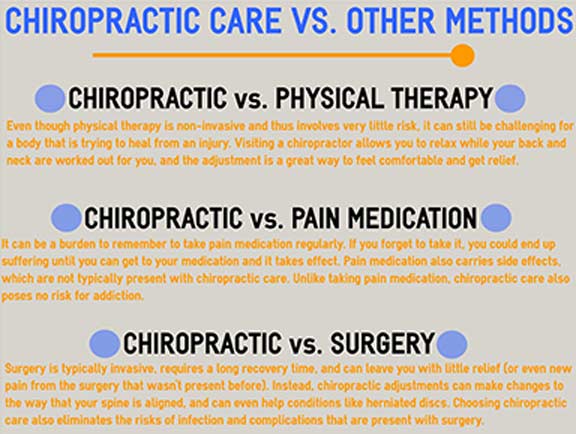Daily Practices That Lead To Pain In The Back And Strategies For Avoidance
Daily Practices That Lead To Pain In The Back And Strategies For Avoidance
Blog Article
Write-Up Written By-Carstensen Glud
Maintaining correct position and staying clear of usual risks in everyday tasks can dramatically impact your back wellness. From how you sit at your workdesk to how you lift heavy items, little changes can make a huge difference. Imagine a day without the nagging back pain that impedes your every move; the solution might be easier than you think. By making best health insurance for chiropractic care to your day-to-day behaviors, you could be on your method to a pain-free presence.
Poor Pose and Sedentary Way Of Living
Poor posture and a less active way of life are two major factors to pain in the back. When find out here now slouch or inkling over while sitting or standing, you placed unnecessary stress on your back muscular tissues and back. This can bring about muscle mass imbalances, tension, and eventually, chronic pain in the back. Additionally, sitting for long periods without breaks or exercise can compromise your back muscles and result in tightness and discomfort.
To fight bad pose, make a mindful effort to sit and stand up straight with your shoulders back and lined up with your ears. Remember to keep your feet flat on the ground and avoid crossing your legs for prolonged durations.
Including regular stretching and enhancing workouts right into your everyday routine can additionally help improve your position and alleviate back pain related to a sedentary way of living.
Incorrect Training Techniques
Incorrect lifting methods can dramatically contribute to back pain and injuries. When you raise heavy objects, bear in mind to flex your knees and use your legs to lift, instead of counting on your back muscular tissues. Avoid turning your body while lifting and maintain the things close to your body to minimize stress on your back. It's essential to preserve a straight back and avoid rounding your shoulders while lifting to prevent unnecessary pressure on your back.
Constantly examine the weight of the things before lifting it. If it's too hefty, request aid or use devices like a dolly or cart to transport it safely.
Keep in mind to take breaks throughout lifting tasks to offer your back muscle mass an opportunity to rest and protect against overexertion. By implementing proper training strategies, you can protect against back pain and reduce the danger of injuries, guaranteeing your back remains healthy and balanced and solid for the long-term.
Lack of Regular Workout and Stretching
A less active way of life without routine workout and extending can significantly add to neck and back pain and pain. When you don't participate in exercise, your muscles end up being weak and inflexible, causing bad stance and boosted stress on your back. Normal workout helps strengthen the muscles that sustain your spine, improving security and reducing the threat of neck and back pain. Including extending right into your routine can likewise boost versatility, stopping tightness and discomfort in your back muscular tissues.
To stay clear of pain in the back brought on by an absence of workout and extending, go for a minimum of thirty minutes of modest exercise most days of the week. Include exercises that target your core muscular tissues, as a solid core can aid reduce stress on your back.
In addition, take breaks to extend and relocate throughout the day, specifically if you have a desk job. Basic stretches like touching your toes or doing shoulder rolls can assist alleviate stress and prevent pain in the back. Focusing on normal workout and extending can go a long way in preserving a healthy back and lowering discomfort.
Final thought
So, keep in mind to sit up straight, lift with your legs, and remain energetic to stop pain in the back. By making straightforward changes to your daily habits, you can prevent the pain and restrictions that feature back pain. Care for your spinal column and muscular tissues by exercising good pose, proper training methods, and normal workout. Your back will thank you for it!
